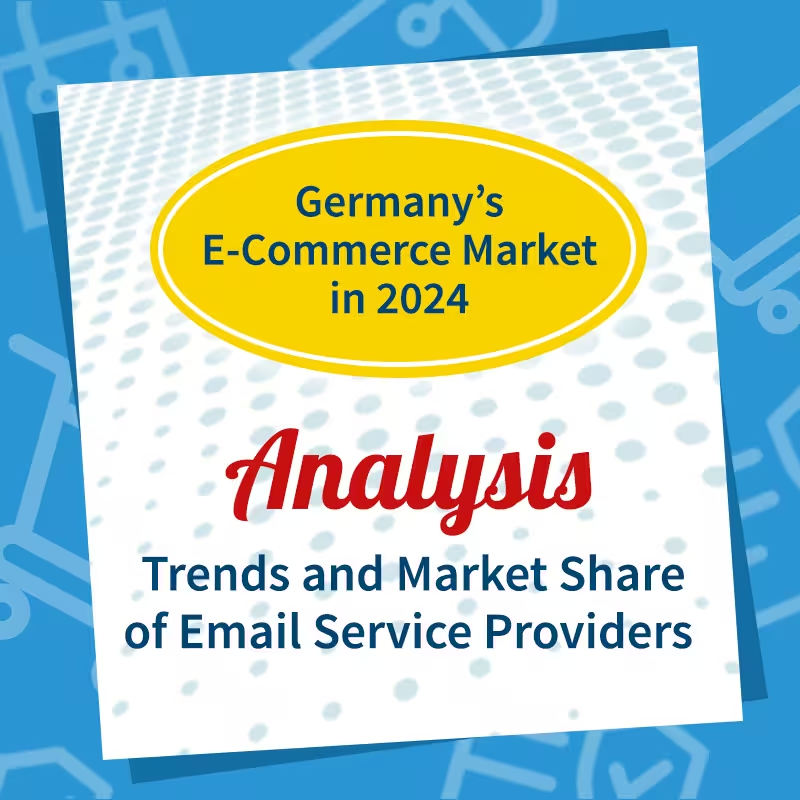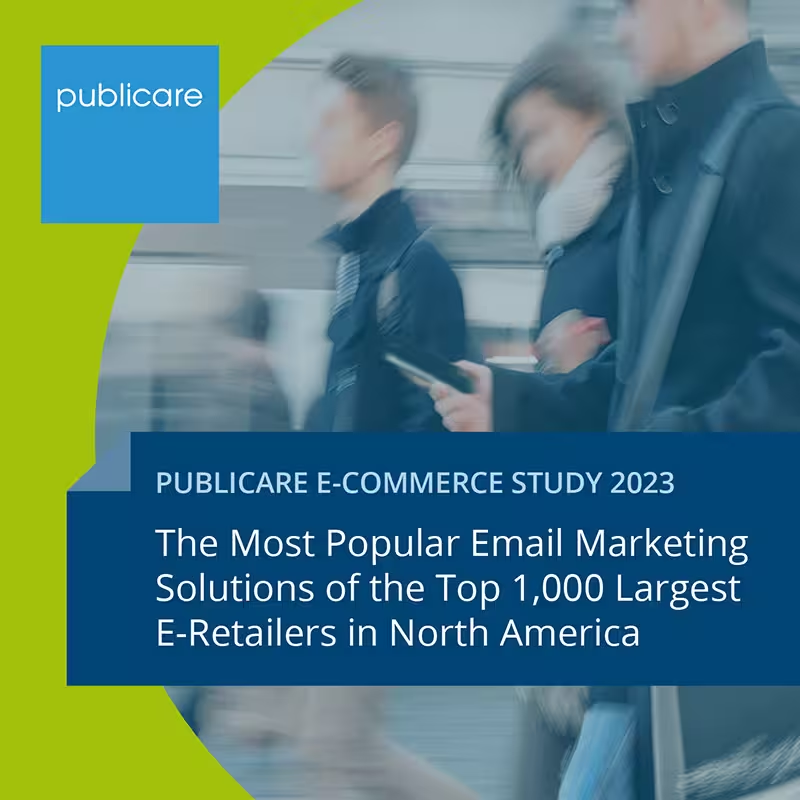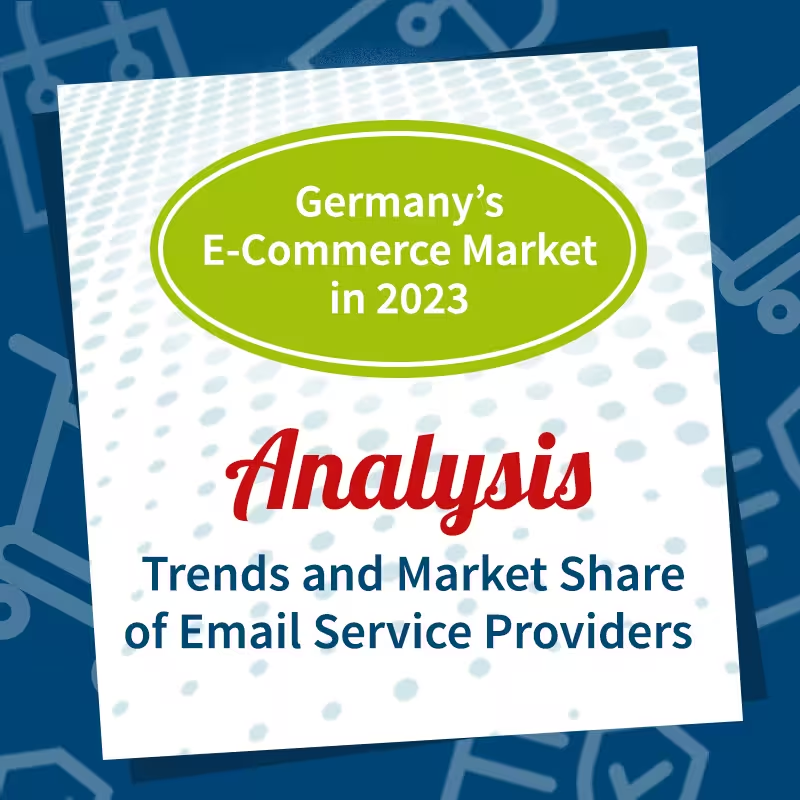Anxiety devours your mailing lists
The Publicare eCommerce study among 1001 German online shops with the EHI or Trusted Shops seal has revealed that just under 90% of shop operators rely on the double opt-in process for subscribing to the newsletter — and thus allocate up to 50% of their email subscriber and thus sales potential. Does it have to be that way?

Email newsletters can support the regular customer business of virtually all online shops — it is therefore in their interest to exploit the subscriber potential. However, almost 90% of online shops whose newsletter subscription process Publicare examined as part of the 2015 eCommerce Study award between 15 and 50% of their subscriber potential using the double opt-in process — according to our sample interviews with shop operators, the latter is the rate of subscribers who do not click on the subscription activation link in the confirmation email. Many of the affected eCommerce companies mistakenly assume that the double opt-in procedure is required by law. They are based on the mantra of email marketing experts who, against the background of civil law decisions, declare maximum provability of given opt-ins as a decisive criterion — and thus present the double opt-in as having no alternative. The quality label operators who make the double opt-in process a certification requirement (EHI) or clearly recommend (Trusted Shops) must also ask themselves whether the actual residual legal risk is not in a bizarre disproportion to the certain loss of sales potential — and therefore a readjustment would be urgently needed in the interest of shop operators and users: away from fear-driven and towards opportunity-driven marketing concept.
Confirmed opt-in: a (often) wise middle ground
A large majority of German shop operators assume that the double opt-in procedure in email marketing is legally mandatory. The results of our 2015 eCommerce study on the frequency of use of opt-in procedures were accordingly. In total, we have evaluated the opt-in procedures of 786 online shops that offer an open newsletter subscription, 212 of which have an EHI certificate and 657 have a Trusted Shops certificate. Of these, 89.3% used the double opt-in procedure. Surprisingly, at 7.0%, almost twice as many online shops use single opt-in as confirmed opt-in (3.7%). If the online shops were grouped according to the seal of approval used, the distribution values only slightly differed from each other. (Incidentally, this also means that around 11 percent of EHI customers do not comply with the binding opt-in requirements of their quality label operator.) With single opt-in, you do not receive a confirmation email, while with confirmed opt-in, a confirmation email is sent. However, in contrast to the double opt-in email, this does not contain an activation link, but simply provides an unsubscribe link in case the subscriber changes his mind or is not aware of the subscription that has just been made. The decisive difference — and, in our opinion, an advantage — of confirmed opt-in compared to double opt-in is that the original consent is valid without further confirmation. Compared to single opt-in, confirmed opt-in in turn offers the advantage of minimizing the practical risk of “negligent” advertising opt-ins at the time of creation — without “costing” subscribers. In short: The rarest opt-in method in German eCommerce cleverly balances the aspects of minimizing legal risks and maximizing sales. So why is she living a marginal existence in Germany's online shops?
Double opt-in — an expensive friend
Case law, certification guidelines, shipping platform operators, industry associations and best practices — everything seems to favor the double opt-in process. However, the law does not specify which procedure must be used. Requirements for a valid advertising opt-in for the email channel are:
- The consent must be given actively by the user
- The consent must be revocable at any time — i.e. ideally in every promotional email you receive — with reasonable effort and without hindrances
- The factual scope of the consent must be clear, i.e. which specific company may send the emails and on which topics.
In principle, these demands must also be covered with a confirmed opt-in, in which the new subscriber receives an email confirming their subscription after registration and with an unsubscribe link if they have changed their mind or someone else has misused their address.
The difference between the various opt-in methods only becomes relevant when a recipient denies having ever given an opt-in and therefore raises the question of provability. With all opt-in methods, the provider can first provide information as to when, on which website and from which IP address the opt-in was given. Only when the newsletter recipient still denies having given the opt-in, must the shop operator specifically prove that the recipient has personally given the opt-in — which is technically only possible with a confirmation link in a separate email, i.e. with a double opt-in. For successful proof, however, the courts require much more than the “savings version” of the double opt-in procedure practiced by many companies, in which a click on the confirmation link in the email is only documented by a corresponding “flag” in a database (possibly with additional storage of a time stamp and/or the IP number used). According to a decision of the Federal Court of Justice dated February 10, 2011 (Case I ZR 164/09), court proof of consent requires rather the “complete documentation” of the opt-in process, which, in the case of an electronically declared opt-in, includes in particular the “storage” and, above all, “the possibility of printing out” the corresponding website and the confirmation email sent (the judges of the highest German civil court obviously belong to the generation of “Internet printers”). On the other hand, the Federal Court of Justice did not accept the witness evidence offered by a technician at that time for the proper implementation and operation of a double opt-in procedure as sufficient proof. Therefore, should a court dispute actually arise, many newsletter senders will not be able to meet the evidentiary requirements of the case law due to the lack of appropriate documentation despite DOI procedures.
In fact, most legal disputes in email marketing have their factual reason not that the original advertising opt-in is disputed, but that shop operators ignore cancellations — and the annoyed recipients finally turn on their lawyer. This often happens because cancellations via reply addresses, for example, are not processed or previous opt-outs by recipients are mistakenly overwritten with opt-ins when reimporting recipient lists. Constellations that are also subject to dispute include too long breaks between sending emails (so that recipients have now forgotten that they actually agreed to receive emails once — a long time ago —) or poorly formulated declarations of consent, where, for example, the exact scope of the consent is unclear.
The question now is whether it wouldn't be wiser to do your homework on reply and list management so as not to annoy recipients, instead of virtually blocking out a significant part of the interested audience from the outset through a cumbersome registration process and not to do business with them. If you keep in mind the lost sales, double opt-in suddenly appears to be a fairly expensive option.
Usability: Why does the newsletter ring twice?
When it comes to the question of the opt-in process, newsletter subscribers vote with their feet: In extreme cases, if half do not complete the registration process even though they have already documented interest once, something may be wrong. So how can the high double opt-in loss rate be explained? In our opinion, double opt-in confirmation emails are not user-friendly. On the one hand, they force subscribers to explain their will twice — as if they were not credible or taken seriously. On the other hand, there is something rigid about a double opt-in that can psychologically lead to an anxiety or rejection effect on the part of the recipient: If a newsletter subscription is so “critical” that you have to give your consent twice, you should perhaps keep your hands off it — especially since at the time of subscription, you usually don't know to what extent you will then be “rubbished” with advertising emails. In addition, the email can simply be interpreted as a confirmation and the activation link can be read over.
Certifiers make it too easy for themselves with double opt-in
From the point of view of certifiers (and also shipping platform operators), the strong preference for the double opt-in process is understandable — using a tough formal and easily verifiable criterion, they ensure that only verifiably “good” subscribers join the mailing list. However, from the extended perspective of a seal of approval, the question is whether there is no far more important indicator of the “quality” of email marketing — i.e. of overall email reputation — than a confirmation link for an advertising subscription clicked at some point in the past. For example, there is apparently no “expiration date” for opt-ins for many companies. Even though the recipient hasn't had any interaction for years, they continue to be bombarded with promotional emails at a high frequency — no EHI and Trusted Shops certificate protects them from this today. So before someone makes a point of quality or even spam when discussing the legitimacy of double or confirmed opt-in, completely different questions should be discussed. Namely about questions of desirability and acceptance of e-mail advertising.
Relevance instead of penetrance — email marketing for fans
The vast majority of German online shops are not part of corporations. It consists of small and micro-enterprises, sometimes run by just one person. Shops often offer a very special range of niches. Customers who shop there are usually happy that the shops exist and are happy to receive news from the respective product or brand world. The trick is not to get a double opt-in in order to now stock up on recipients with heaping emails, but to treat subscribers on equal footing with respect. In other words: to offer content that is likely to be interesting and therefore relevant to them — and at a reasonable, not too high frequency. And to supply longer inactive subscribers with alternative content through finely balanced response measurement (keyword: reactivation), to shut down the email frequency and — even though both of this doesn't help — finally stop sending emails voluntarily. From our point of view, the discussion about double or confirmed opt-in dissolves into the much more important issue: How can I turn my customers into fans through great newsletters? Real fans don't go to lawyers. And if the notorious “black sheep” appears seeking a dispute — an average warning usually costs well under 1,000 euros. Let up to 50% of the entire subscriber base whizz out of fear of it? Everyone must decide this for themselves from a business perspective.
















